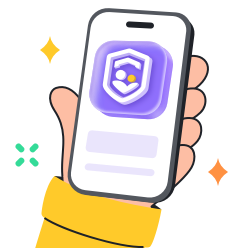Technology has become an important aspect of the life of today’s children. Smartphones, tablets, and computers are everywhere. This gives rise to a big question: Is technology safe for kids? It is an important question to address in this age of digital world. With the advancement in technology, the learning opportunities and knowledge has expanded tremendously. That is to said, there are some associated risks which need to be tended to. So, in this article, we’ll explore technology’s pros and cons and its effect on children. It also provides safety guidelines for parents to protect their kids.
Is Technology safe for kids?
The word safety is very generalized. Safety involves physical, mental, emotional, and online well-being.



Physical safety
The physical safety issues are the prospects of eye strain, postural issues, and physical inactivity. Headache, neck pains, and obesity are the side effects associated with prolonged use of the devices. Sedentary lifestyles among children are discouraged by the World Health Organization (WHO). Children require frequent movements in order to grow healthy.
Emotional and mental safety
Mental and emotional safety requires that children are not exposed to stress, anxiety and other negative emotions. Moreover, children are easily subjected to cyberbullying, online harassment and unhealthy social comparisons. Such experiences are harmful for self-esteem and psychological well-being. The American Psychological Association (APA) underlines the relationship between the use of social media and anxiety among the youth.
Online safety
The concept of online safety regards protecting children against harmful content and communication. There are plenty of violent, sexual, and inappropriate materials on the internet. Children are also exposed to online child predators or scams. According to the Federal Trade Commission (FTC), children are more prone to privacy violations and identity theft.
What are the factors that affect safety?
Factors affecting safety are mentioned below:
- Age: Children are not capable of making the right judgement due to their young age. They require appropriate direction and supervision.
- Content: Not every digital content is safe for children. Educational material should be focused and sexually explicit material and violent films should be filtered out.
- Usage habits: The use of technology should be moderate and well-balanced as it is more healthier this way. Excessive reliance may give rise to certain risk factors.
- Parental involvement: Good parental guidance is always essential. Rules, supervision and open communication help children.
Expert Recommendations:
Child psychologists and doctors provide clear instructions. The recommendations of the American Academy of Pediatrics (AAP) are mentioned below:
- Children below 18 months: There should be no screen viewing with the exception of video calling.
- Children from 18 to 24 months: Select the subsequent quality content and watch it along with the child.
- Age 2-5 years: The screen time should not exceed 60 minutes a day and good quality content relative to the age group should be watched.
- Age 6 years and above: Establish proper boundaries. Make sure that technology never replaces rest, physical activities or in-person communication.
Researchers also encourage co-viewing and co-playing. Parents need to be actively involved. This assists learning and avoids exposure to toxic content.
Use parental controls to manage content your kids are exposed to
Positive effects of technology on child development
Technology can support healthy development when used wisely. Here are some key benefits:
Enhances learning and access to information
Online gadgets offer unlimited knowledge. Interactive games, online courses and educational apps make the process of learning enjoyable. Children have the freedom to learn science, math, language and art. The National Education association (NEA) observes that learning can be made more interactive via technology. It also assists the teachers in responding to various learning needs and styles.
Boosts creativity through digital tools
Technology has a potent amount of creative resources. Children are able to draw, paint, compose music or create videos with the help of apps and software. Such instruments promote experiment and self-representation. As an example, the coding platforms allow children to create games or animations. This develops creativity and technicalities.
Apps allow children to write their stories and to illustrate themselves by using digital storytelling. Online publishing of works motivates children to become better and learn with others.
Improves problem-solving and cognitive skills
Most digital games and applications encourage problem-solving. Critical thinking is needed to solve puzzles, play strategy games and to code. Kids get to understand how to strategize, reason, and accommodate to the latest challenges. According to the American Academy of Pediatrics (AAP), interactive technology has the potential to develop better thinking.
Logic and sequencing are imparted by coding apps. Math games advance counting and playing skills. These activities equip the child and train them to face academics and real-world problems.
Enables connection with friends and family
Communication technology assists children to stay in touch with their loved ones. Social networks, video conferencing, and messaging apps close the gaps between people. This is particularly relevant in times of isolation like the COVID-19 pandemic.
Children are also able to do school projects or play online with a friend. So, these exchanges help social growth and emotional stability.
Builds digital literacy and tech readiness for the future
The 21st century has made digital literacy one of the essential things in the contemporary world.
Introduction to technology at an early stage enables children to acquire knowledge on how to utilize technology properly. They can have experience in typing, searching and assessing information.
Digital educational tools are finding more applications in schools for teaching and evaluation. iTechnology-compliant children are better equipped to deal with academics.
Negative effects of technology on child development
Although mostly beneficial, technology also poses significant threats to children. These should be addressed to ensure a safe and healthy development.
Risk of screen addiction and overexposure
Screen addiction is an emerging issue. Children can get addicted to gadgets as a source of relaxation or amusement. This may push aside other pursuits that are important, such as reading, sports, or family time.
Gaming excessively is referred to as a mental disorder by the World Health Organization (WHO). Overuse of screens may cause withdrawal syndrome, irritability, and a loss of interest in any other activity.
Impact on attention span and academic focus
The attention span can also be reduced when high-tempo digital media is used on a regular basis. Children may experience difficulties focusing on schoolwork or other activities that require concentration. The use of devices can also hinder learning and memory, as people tend to multitask.
A recent study published in the pediatrics journal showed that increased screen time also correlated with a decrease in academic performance. Therefore, children who use devices more often tend to show less improvement in math and reading.
Disrupted sleep patterns from screen time
Screen time can impact sleep. Devices emit blue light which inhibits the production of the melatonin hormone, thus regulating sleep. Children may suffer from difficulty falling asleep or poor-quality sleep.
Mood, behaviour, and learning are all distorted by sleep deprivation. According to the National Sleep Foundation, it is desirable to turn off screens at least one hour before bed.
Exposure to inappropriate or harmful content
The online world is filled with inappropriate content. Access to any violent, sexual, or hateful content is relatively easy. Viewing such material can instill fear, confusion, or trauma. It can also shape behavior or attitude negatively. The Children’s Online Privacy Protection Act (COPPA) is aimed at protecting children under 13 years old; however, it is challenging to enforce.
Social Issues: Cyberbullying, isolation, or reduced face-to-face interaction
One of the most significant concerns of children’s internet use is cyberbullying. On social media, harmful messages, rumors, and threats can spread quickly. Even worse, the victims can be left isolated, anxious, or depressed.
When the screen use is high, social skills in real life may also be subpar. Children can have fewer face-to-face interactions. This may impair empathy and communication.
Privacy and data security concerns
Apps and websites typically gather personal information. This information can be easily abused. A violation of privacy can result in identity theft or selective advertising.
The Federal Trade Commission (FTC) cautions against online scams, with kids being the most vulnerable group. So, parents should stay attentive with regards to privacy and sharing data.
How to protect your kids from being overly reliant on Technology?
Families and caretakers play a crucial role in ensuring the safe usage of technology. Following are some effective methods of preventing child abuse:
Set daily screen time limits based on age
Use expert recommendations regarding screen time. A child aged 2 to 5 years old should have no more than 1 hour of non-educational screen time per day. With older children, establish firm and inflexible boundaries. Ensure there are no interruptions to sleep time, exercise, and family time due to technology.
Regulate with the help of device settings or parental control apps. Do not provide screens during meals, before bedtime, and establish a no-screen time policy.
Encourage regular offline play, reading, and outdoor time
Engage in physical activities that involve going out, reading books, or taking part in other creative activities. Physical play promotes motor skills, health, and social development.
Board games or walks are a good bonding experience and help provide healthy alternatives to screen time.
Use parental control tools
Parental control apps are effective in regulating device usage and ensuring children’s online safety. Apps like FlashGet Kids can be a lifesaver in such situations for parents. These tools offer a ton of features like:



- Screen Time Restrictions: Supervise and regulate daily or weekly screen time limits.
- App Blocking: Block distracting or unwanted apps.
- Live Tracking: Monitor devices and app usage in real-time.
- Physical Location Tracking: Stay aware of your child’s whereabouts at all times.
- Screen Mirroring and Remote Camera: Monitor your child’s surroundings and their device’s screen.
Co-view or co-play with children to stay involved
Stay involved in the online world of your child. Watch stuff together, play games, or browse through apps. This will make you aware of what your child is going through.
Co-viewing has the benefit of allowing you to discuss content, reply to questions, and leave meaningful messages and lessons. It also helps you detect potential problems before they occur.
Talk openly about tech boundaries and online safety
Describe the benefits of rules and the dangers associated with the use of the internet. Instruct kids on privacy, appropriate manners, and what to do in case of cyberbullying.
Ask your child to openly discuss their worries with you. Teach them how to block and avoid unwanted interactions with strangers.
Be a positive role model
Children learn by imitation. Exhibit an excellent example of healthy technology habits. Minimize personal use of electronic devices, particularly when you are with your family. Demonstrate the use of the devices in learning, creativity, and connection.
Keep devices in shared spaces
Put computers and tablets in shared rooms of the house. This makes it easier to track the usage and reinforce rules in a responsible manner. Do not bring devices to bedrooms (particularly at night).
Review apps and games before use
Research the apps, games, and websites that your child can use by checking the app content and rating. Seek educational and child-friendly content. Check the reviews and privacy policies to ensure everything is safe.
Conclusion
Should children use technology? Definitely. Technology can be of significant importance in learning, being creative, and socializing. However, there are the looming risks of addiction, exposure to harmful material, and the threat to privacy. Use and misuse are reliant on age, content, usage habits, and parental supervision. Parents can let children access technology by setting clear boundaries, promoting offline activities, and installing parental control software, such as FlashGet Kids. It is also essential to stay open-minded and communicative.
FAQs
The maximum daily time that children between the ages of 2 and 5 should be allowed is no more than an hour. For 6 years and above, establish proper boundaries and maintain a healthy balance.
Yes, when used wisely. Educational apps, videos, and games can enhance learning and motivation. Technology enables personalized instruction and provides immediate feedback. It also builds digital literacy, which is essential for future success.
Set an example on how to use devices healthily. Establish strict guidelines on screen time, and adhere to them. Find substitutes and suggest activities such as sports, reading, or visiting relatives and friends. Guide them with the help of parental controls.

